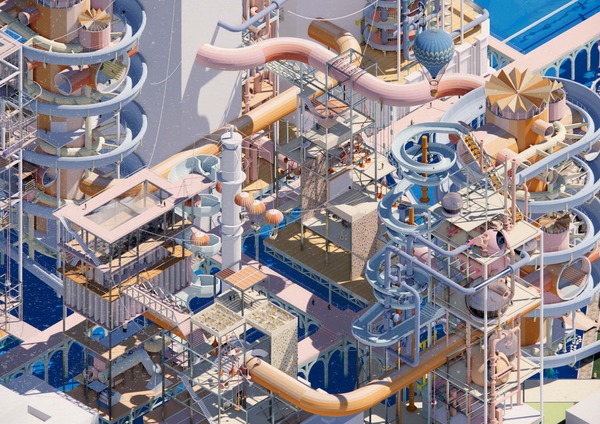Autopia: A Neurodiverse Dreamland
While architects have considered the existence of individuals with various types and degrees of disabilities, this has predominantly focused on “accessibility,” which is mostly physical concept. However, there are other deficiencies or disabilities that are not as “visible” and are precluded when a built environment is made “accessible.” For people with certain cognitive and sensory deficiencies, including those suffering from autism, due to their deficits, they have to make an enormous effort to be able to assimilate and understand the environment surrounding them. Despite the high incidence of autism, there is yet to be developed architectural design guidelines that cater to the broad scope of autistic needs.
Autopia is a multisensory, immersive experience that channels the limitless imagination of individuals with autism and transforms it into reality. It’s an stimulating and interactive design that provides an opportunity to disconnect from everyday life and connect with emotions through colourful installations and spaces that inspire relaxation, excitement and happiness. Each sensory experience aims to reduce the affects of sensory integration dysfunction in the motor and cognitive development of autistic individuals. Some of the most common problems autistic individuals experience are their hyper- or hypo-sensitivities to sensory stimuli. Their senses seem to be too acute (hypersensitivity) or not working at all (hyposensitivity). These techniques use two or more senses simultaneously so that one sense, perhaps a stronger one, can reinforce another, taking advantage of an individual’s strengths to aid in addressing his weaknesses. Incorporating various levels of stimulation, this project explores the 8 senses through a series of vibrant, interactive and immersive spaces.


